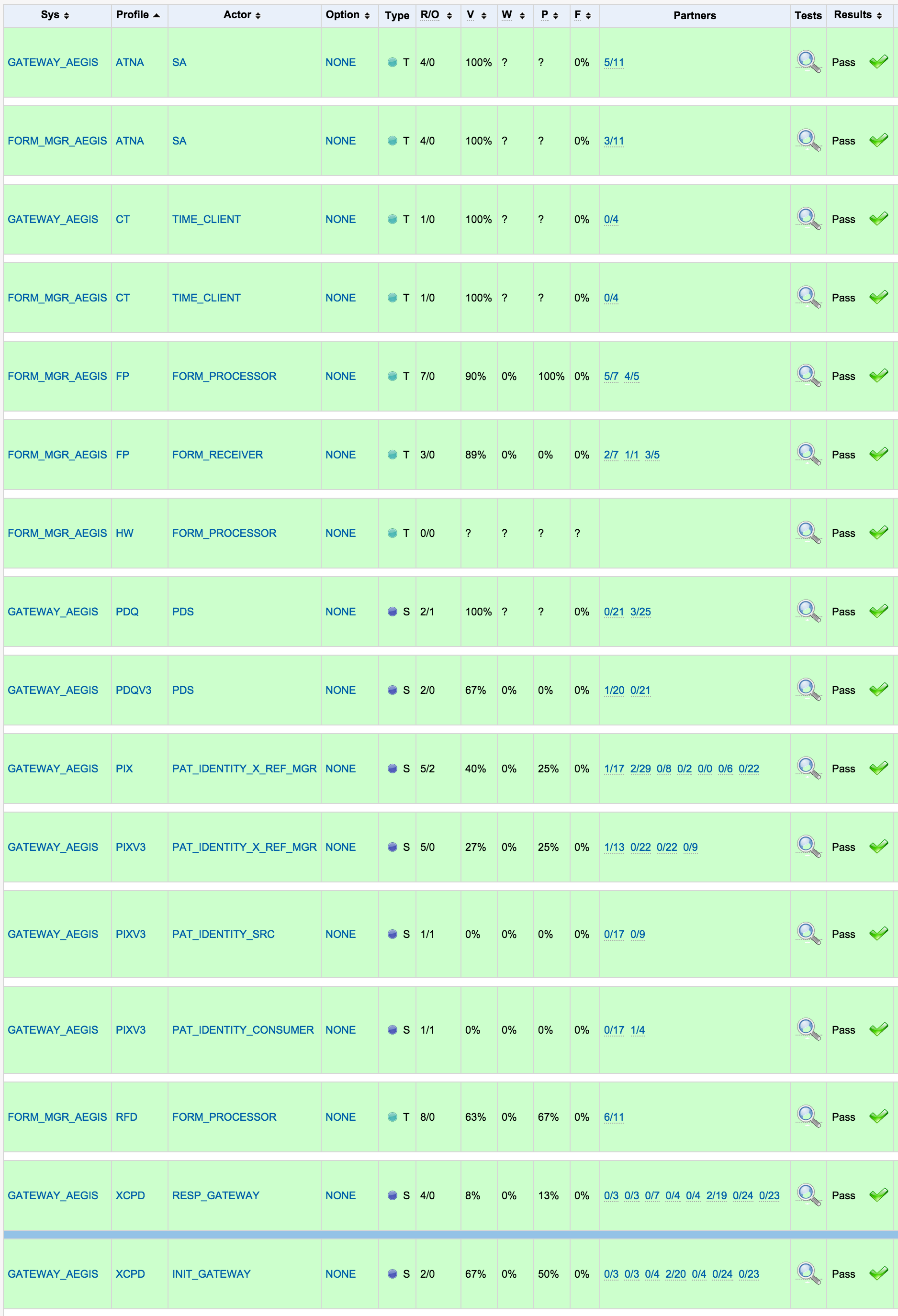The 2015 North American IHE Connectathon ran from January 26 through January 30 in a new venue at the Cleveland Convention Center near the Lake Erie waterfront. I mention “near the waterfront” because, unlike the Chicago basement dungeon of years past, we had a floor-to-ceiling wall of windows at this Connectathon. What a difference it is to be able to see the world outside!
The AEGIS team was honored to attend for the 5th year in a row, this time with a primary focus on facilitating the testing of the Family Planning IHE profile on behalf of the HHS Office of Population Affairs (OPA). The Family Planning Profile (FPP) was being exercised for the first time at this Connectathon–not the easiest situation for a profile sponsor or profile testers. Nevertheless, all the FPP teams were ready.
The week was the culmination of many months of planning by OPA, followed by four months of rigorous preparation and testing by the four teams (besides AEGIS) preparing to test FPP at this Connectathon: Patagonia Health, Mitchell & McCormick, Netsmart and the Utah Department of Health. As seasoned Connectathon veterans who have made our share of mistakes over the years, the AEGIS team knew how to coach the FPP testing teams to position them for a no-drama breeze through this Connectathon, and they got there–all except for that “no-drama” part, and it wasn’t quite as “breezy” as we hoped.
2015 Connectathon Results
Before I get into lessons learned, let me celebrate the fantastic work done by all the teams with whom we interacted–as reflected by AEGIS Connectathon results:
Yes, that is a bunch of green; it is the 16 actors passed by AEGIS in our role to help others be successful at Connectathon. We may be unique among Connectathon regulars in that we don’t have health IT products; our business (and passion) is helping advance interoperability of all products, so we love results like these.
FPP (FP in the results table) is built on RFD, as is Heathy Weight (HW); you can see that we were able to leverage our Form Processor work on FP to help test RFD and HW. The other 12 actors are the testing our team was able to do to help advance other profiles this year.
This leads us right into my lessons learned:
1. It’s all about advancing profiles. I realize this is an obvious point, but these results really brought it home for me this year. Not only were we able to drive the process for ALL the Family Planning actors getting to “Pass” this year (an amazing feat for a first-year profile), we were able to help nine other profiles too.
2. Connectivity challenges are the great equalizer. No matter how prepared or experienced teams are, spending 2+ hours to get all the connectivity plumbing working on that first day seems inevitable. I was chagrined that despite the fact that we had practiced this by using IHE certificates ahead of time while FPP testing teams were practicing using the DIL, we all still struggled with this–just like every other group on the Connectathon floor.
3. Tests can be wrong–and that can be beautiful. Our tendency as technical wizards who habitually determine root causes of system glitches and hunt down bugs in our code is to assume that we are to blame when testing results look wrong, but sometimes the test is wrong. As a new profile, the FPP tests were evolving rapidly (even during the Connectathon), and one of our Form Filler teams noticed that the data specified for a test was impossible to extract from a valid EHR system. The beauty of this test defect was that only someone who wasn’t “faking it” at the Connectathon would find it. Nice, eh?
4. A new IHE profile is NEW–to everyone. This includes the Connectathon monitors–those dedicated volunteers who tirelessly slog through the process of validating testing results. That effort translates into delays while monitors figure out how to understand the profile well enough to be able to do their job. And it created some unintended drama for (and denied some of our intended “breeze” from) our Family Planning testing partners, who were prepared so well that they were done Tuesday evening–then had to wait until late Wednesday for the monitors to catch up.
5. Connectathon monitors deserve better tools. I humbly suggest that it is a crime to monitors and to testing teams that monitors must spend most of their time manually inspecting messages instead of having meaningful interactions with the teams and systems exercising the profiles. The AEGIS Developers Integration Lab (DIL) captures these messages and instantly validates their content down to the attribute level. We used the DIL for both our pre-Connectathon testing and on the Connectathon floor, and it helped Family Planning testers tremendously–including two teams recruited during the event. (One of them passed as a Form Filler cold-turkey in half a day.) I am impressed that Steve Moore was gracious enough to consider using DIL output to assist the Family Planning and RFD monitors. We need to advance experiments like this to remove the drudgery from the monitor workflow.
Imagine how much more we could advance profiles at the Connectathon if every team could do twice as much testing.
6. Windows (those physical things with glass the expose people to natural light) really matter. I contend that there was a more vibrant energy level on this year’s Connectathon floor because we had windows. We may be introverted brainiacs, but natural daylight is a magical elixir to us too.
7. Keith Boone (@motorcycle_guy) really is a living legend. I met Keith before, but I was struck this year by how people swarmed around him like rock star groupies when he walked into the room, and I noticed a giddy tweet from someone who had just met Keith in the hotel lobby. Seriously: I’ll have whatever he is eating.

